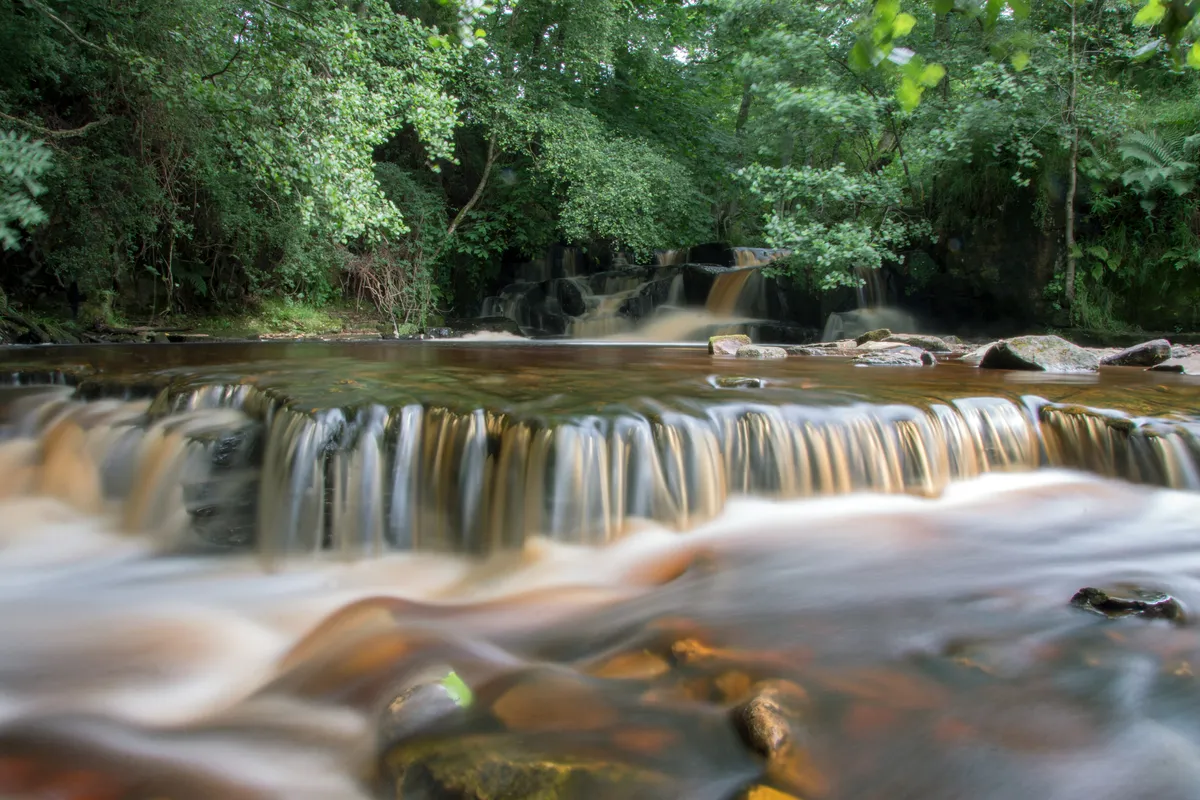As you head out of Bellingham, you would find it hard to believe that, 150-odd years ago, this was an industrial landscape filled with the sounds of roaring furnaces and rattling mine trucks.
Around you are spoil heaps from coke ovens and a quarry, as well as abandoned mineshafts, but nature has reclaimed this landscape and transformed it into a magical site, all tinkling water and twittering birds.

Wishing tree
Through the kissing gate, where the three-mile there-and-back walk begins, a tiny stream flows from the ‘fairy spring’, where children used to make wishes, and by the sixth bridge there is a tree stump studded with coins, placed for luck, a wish, or as an offering to the fairies.
Whether or not you believe in these tiny beings, fairy flax’s little white flowers are one of the natural treasures in this damp, dappled, deep gorge, along with wood sage’s lemony spires, heather, wild raspberries and bilberries.
But it is the 300-plus ferns, mosses, liverworts and lichen, many characteristic of ancient woodland, that have won the area SSSI status. You will notice the lush greenery of ferns; small, creeping maidenhair spleenwort, brittle bladder ferns and parsley-lookalike oak fern, hard shield fern’s shuttlecock-like rosettes and rounded leaves of common polypody. Mosses and lichens smother damp boulders and branches, and tiny-leaved liverworts sprawl across damp ground or rocks.
Nibbled pine cones and cracked hazelnuts may mean a red squirrel is nearby. In July and August, females may be nesting with their second litter. At twilight, look out for Daubenton’s bats, before they hibernate from September.
View from six bridges
The path switches sides of Hareshaw Burn, a tributary of the North Tyne, via six bridges, offering beautiful views of the rippling, splashing water beneath. The final footbridge’s sinuously curving elm lengths are designed to imitate the movement of wind and water. The Victorians sought to improve on nature by planting Douglas firs here, and built a bandstand for concerts and dancing. Follow the sound around the bend, down stone-slab steps to the ‘linn’ – old dialect for waterfall – gushing or trickling, depending on recent rainfall, over the 30-foot sandstone cliff.
Look out for species such as the oak fern
Industrious visit
Enjoy the views in reverse on the way down, then call in at The Heritage Centre, on one platform of Bellingham Station – closed since 1963 –to learn more about the landscape’s former industrial life, seeing and hearing from farm, mine and forge workers. Discover the railway’s history and explore the station’s original features, then climb aboard the two restored 1957 train carriages (or the driver’s cab) of Carriages Tea Room, and enjoy satisfying soups and sandwiches, home baking or afternoon tea, served by friendly staff.
Words: Adrienne Wyper